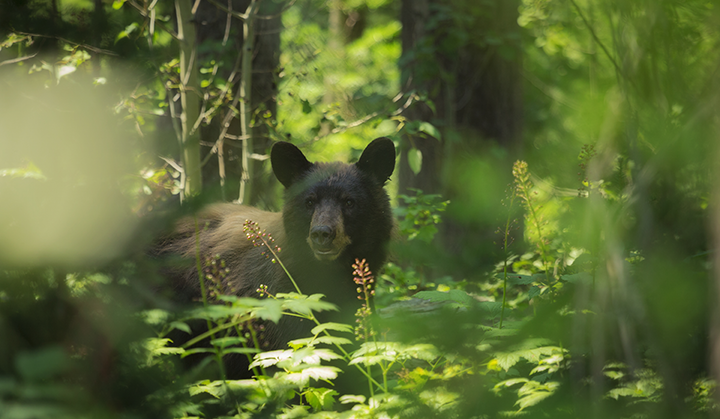How Y2Y partners are restoring a rare forested-wetland marsh for connectivity in the Upper Columbia
The Snk’mip Marsh Sanctuary is a special place on the north end of Slocan Lake, tucked away in southeastern British Columbia. Snk’mip (“sink-meep”) is from the Sinixt First Nations’ language, meaning “head of the lake.”
This rare forested-wetland ecosystem in the Slocan Valley sits on a 17.4-hectare (43-acre) parcel that was once heavily altered and infilled. Now, it is being restored to better support wildlife, habitat connectivity, and native plants and amphibians thanks to the work of the Valhalla Foundation for Ecology (VFE) – one of Y2Y’s 2020 partner grant recipients.
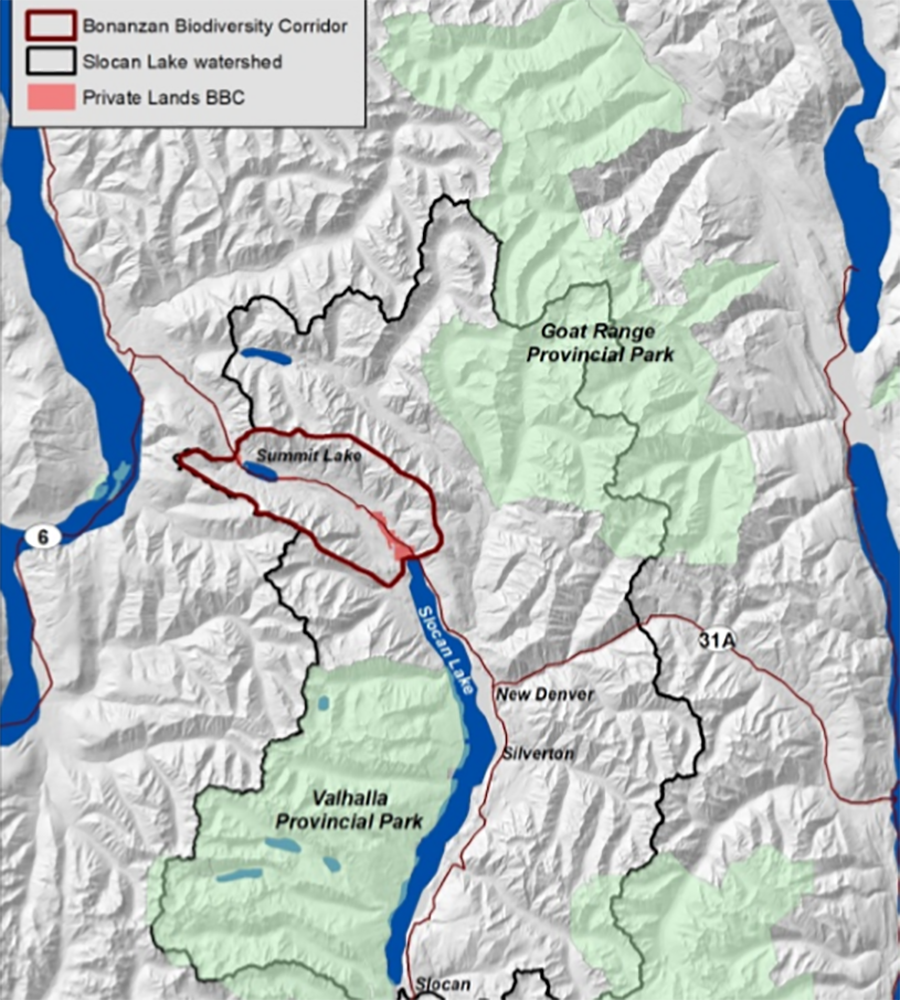
The Slocan Valley forms part of the Upper Columbia, a critical piece of the larger Yellowstone to Yukon region. Year-round, Snk’mip is a refuge for ungulates, carnivores, birds, amphibians, reptiles and rare plants. The marsh straddles an important kokanee spawning creek used by grizzly and black bears and is in a major wildlife riparian cross-valley corridor between Valhalla and Goat Range Provincial Parks as well as an anchor property of the Bonanza Biodiversity Corridor.
“Snk’mip is part of the larger Bonanza Biodiversity Corridor, a critical low-elevation connectivity zone,” says Candace Batycki, Y2Y’s B.C. and Yukon program director. “Maintaining and, where needed, restoring these corridors is vital for the landscape-level connectivity that is such an important part of the Y2Y vision.”
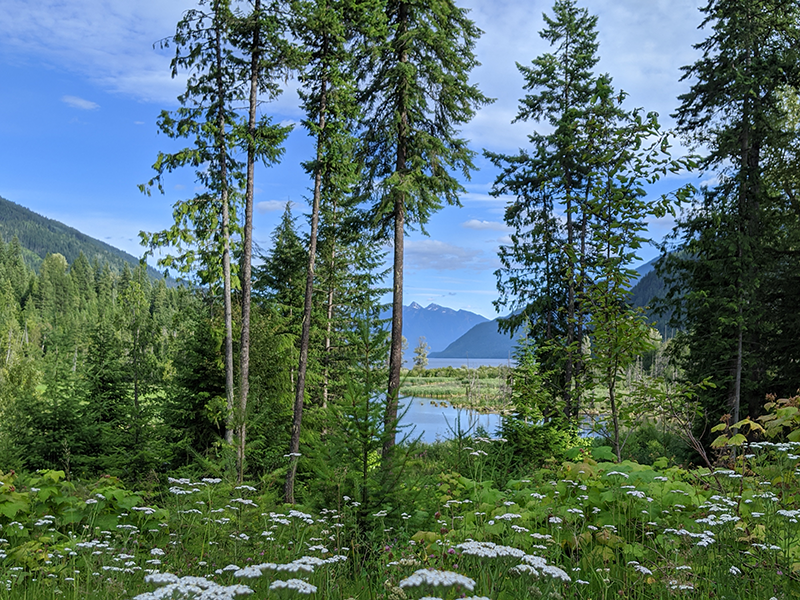
Purchased by VFE in 2017, wetland restoration is well underway and already shows signs of healthy wildlife presence, including a bear-rub tree and ungulate pellets covering the ground. Ponds created last August are now bursting with amphibian tadpoles; adult frogs and salamanders have also moved in. Whether more permanent habitat or a stopover for seasonal migrations, animals are making themselves at home here. So far, over 1,000 trees and shrubs – saskatoon, mountain ash, red osier, dogwood for moose browse and berries for bears and birds – have been planted around newly created wetland habitat, with help from the Central Kootenay Invasive Species Society and local youth.
Additionally, removing remnants of roads and restoring the wetland to its natural state are some of the steps VFE has undertaken to enhance secure habitat for grizzly bears, moose, deer and other animals such as the western toad that breeds in the marsh. However, more needs to be done to fully restore this ecosystem so it can support species into the future.
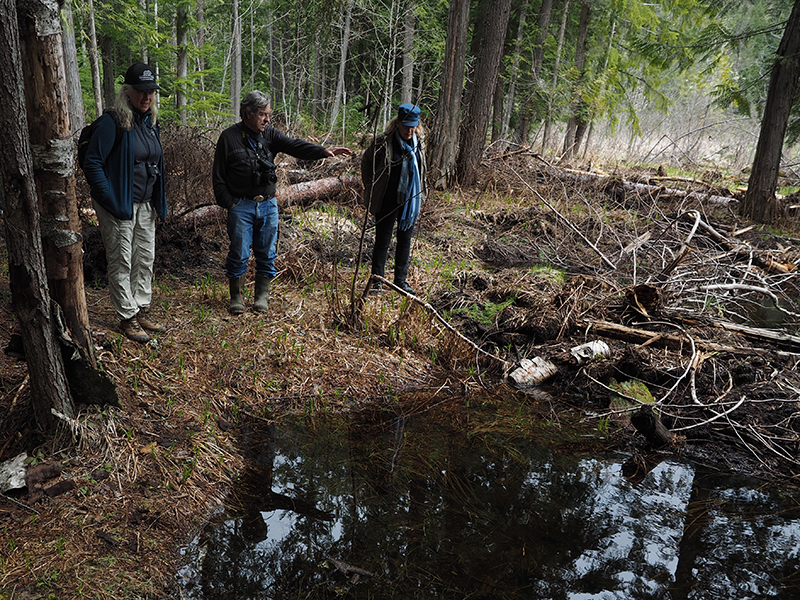
“Our planet needs all the wetlands it can get as they are vitally important for birds, insects, reptiles, plants, amphibians and all manner of endangered species. They also provide many ecosystem services that benefit humans such as water filtration, flood control, carbon sequestration and climate change mitigation,” Lorna Visser of the VFE wrote in a column for the Valley Voice community newspaper.
How has Y2Y supported it?
The Yellowstone to Yukon mission progresses because of collaboration. That’s why we’re proud to continue with our partner grants program — one that has been running since 1998.
Y2Y and partners like VFE are working to protect the Upper Columbia for wildlife and climate change resiliency. With a focus on reducing habitat fragmentation and supporting vital habitat for an abundance of species, we’re pleased to partner with VFE on phase two of Snk’mip marsh restoration, which will further enhance the wetland’s natural functions. This phase includes deactivating a gravel pit area, creating more groundwater-fed pools, and enhancing secure areas for sensitive species. There’s also more planting to be done and plans to rehabilitate a large cleared area at the north end of the marsh.
“This part of the Upper Columbia region is a critical corridor and we are thankful for the local commitment to help wildlife that live and move through this area.”
Nadine Raynolds, Upper Columbia program manager
This restoration benefits wildlife and people, who are welcome to respectfully enjoy the Sanctuary’s wild spaces. Careful design of the restoration means human disturbance will be directed away from sensitive riparian wildlife areas while still allowing people to observe wildlife or take a peaceful walk along a forest pathway. Snk’mip is also a place to learn in and learn from, as local organizations and schools often visit for educational outings.
Y2Y B.C. team members Candace and Nadine visited the restoration site in spring 2020, allowing them to see some of the early results of this project.
“It was great to learn about everything that goes into a wetland restoration project and be out in the field for the day right in my backyard,” says Y2Y’s Upper Columbia program manager Nadine Raynolds, who lives near Slocan Lake. “This part of the Upper Columbia region is a critical corridor and we are thankful for the local commitment to help wildlife that live and move through this area.”
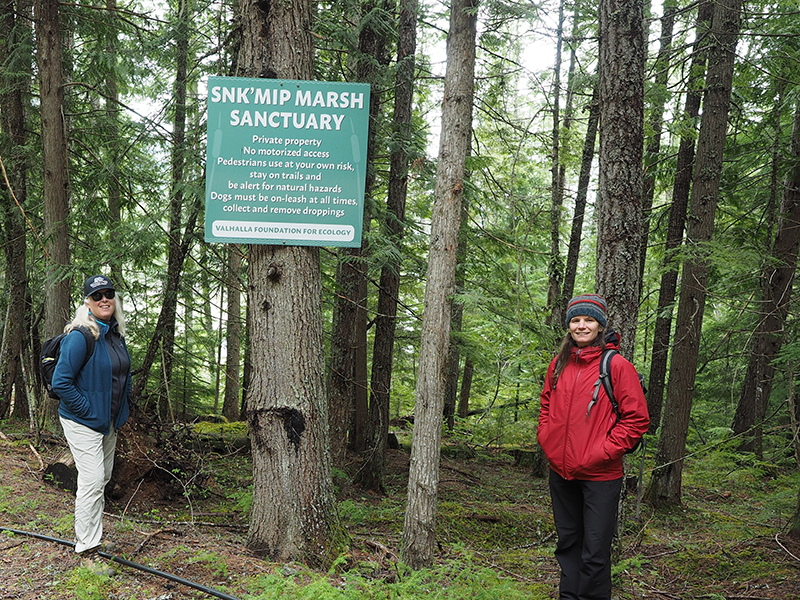
Y2Y’s partner grant program is one of the ways we support organizations whose work underpins our mission. These on-the-ground projects complement our efforts and mobilize work that we wouldn’t be able to do on our own. We are pleased to provide this financial support for the conservation community, because we know that it is only by working together that we will succeed.
In 2020, we funded 12 projects including this one, totaling $54,500. These projects will help protect and connect the habitat from Yellowstone to Yukon so people and nature can thrive.
Proud partners: Valhalla Foundation for Ecology
The Valhalla Foundation for Ecology is a registered charity and ecological-conservation land trust whose mission is “saving wild places for wild things.” Their important work in this part of the Yellowstone to Yukon region includes public education about the value of wetlands and their restoration of wildlife, amphibian and reptile habitat, as well as connectivity in a major cross-valley corridor.
